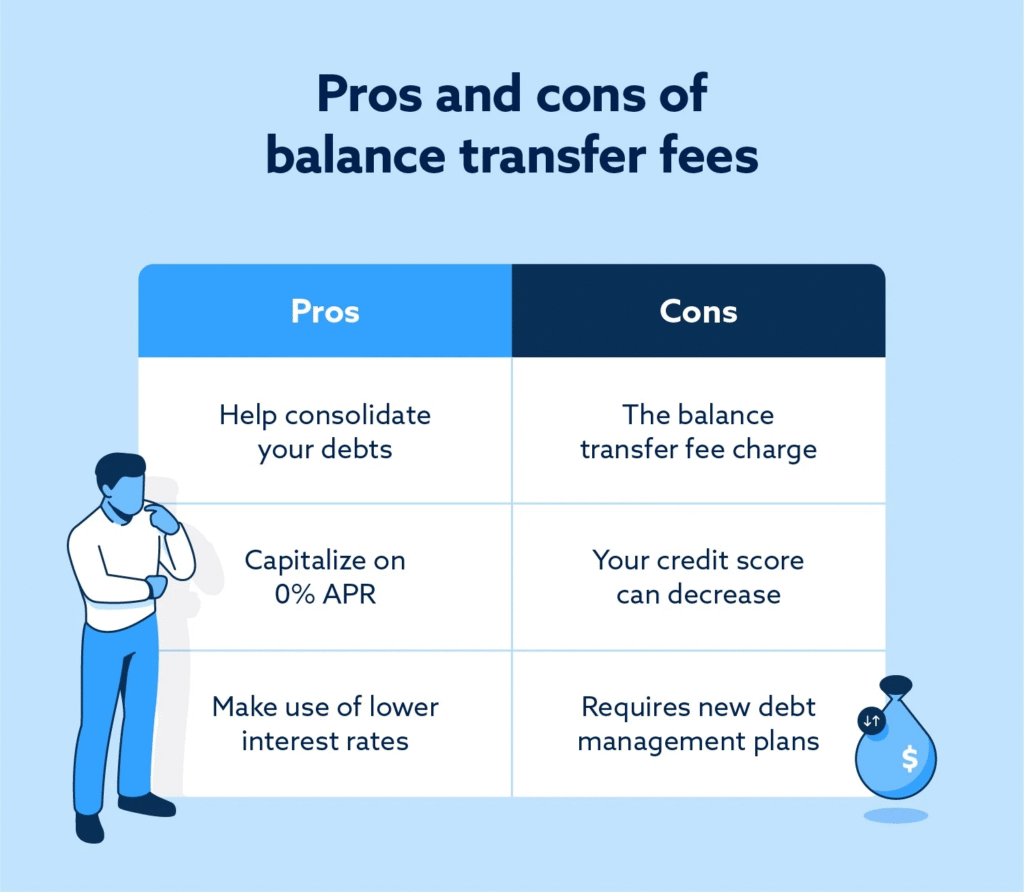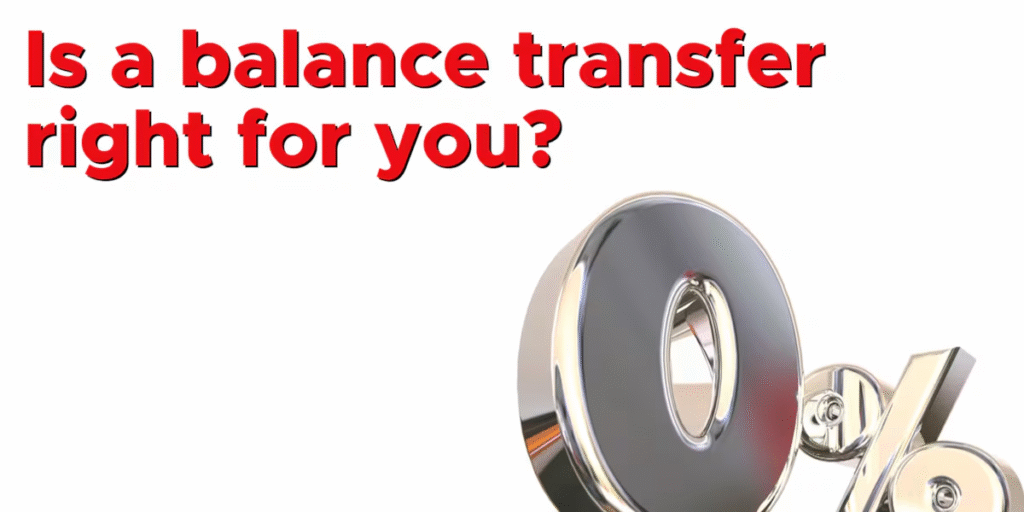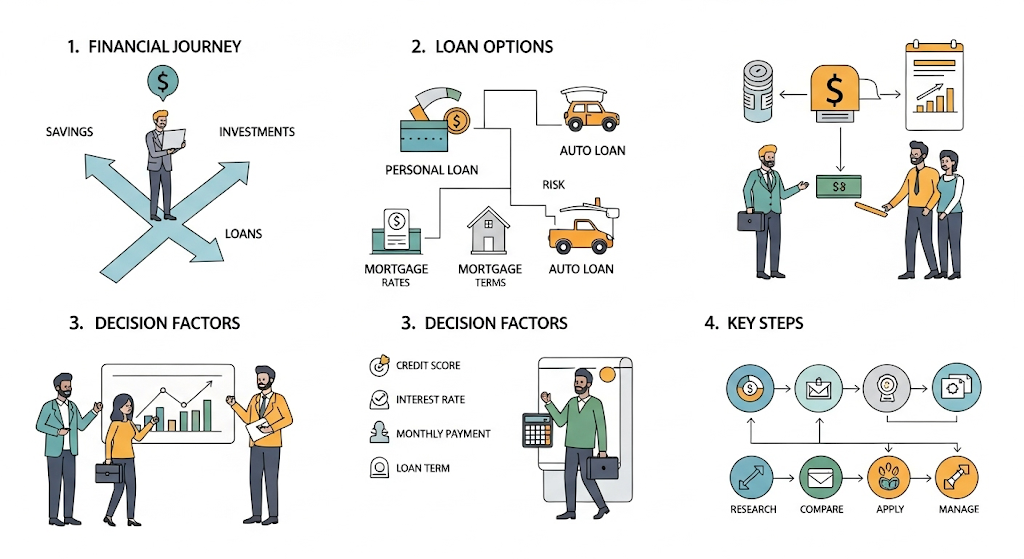
What Is a Balance Transfer in Credit Cards? Explained Simply
If you’re struggling with credit card debt and high-interest rates, you’ve probably come across the term balance transfer. But what exactly does it mean—and how can it help?
A balance transfer is a credit card feature that allows you to move your existing debt from one credit card to another—usually to take advantage of a lower interest rate. This can save you hundreds or even thousands in interest if used correctly.
In 2025, many credit card issuers offer 0% APR balance transfer offers for 12–21 months. These can be a powerful tool for getting out of debt faster, but they also come with fees, fine print, and risks if mismanaged.
In this guide, we’ll walk you through:
- What a balance transfer is (and isn’t)
- How it works step-by-step
- Pros and cons
- Common fees and mistakes
- Who should (and shouldn’t) use one
- The best strategies to maximize savings
Let’s break it down so you can make a smart, informed decision.
Chapter 1: What Is a Balance Transfer? (300–400 words)
1.1 Definition
A balance transfer is when you move an existing balance (debt) from one credit card to another card—usually one with a lower interest rate. The goal is to save money on interest and pay down debt faster.
1.2 Example
Let’s say you owe $5,000 on a credit card with a 22% APR. You apply for a new card offering:
- 0% APR for 18 months on balance transfers
- 3% balance transfer fee
You move the $5,000 to the new card, pay a $150 fee (3%), and now you have 18 months to pay off the balance interest-free.
1.3 What Can Be Transferred?
You can usually transfer:
- Credit card balances
- Some personal loan balances
- Store card debt
Transfers between cards from the same issuer (e.g., Chase → Chase) are not allowed.
Chapter 2: How Does a Balance Transfer Work? (Step-by-Step) (400–500 words)
Here’s how the process usually works:
✅ Step 1: Apply for a Balance Transfer Credit Card
Look for:
- 0% APR for 12–21 months
- Low transfer fee (3% or less)
- No annual fee if possible
Popular options in 2025 include cards from Chase, Citi, Discover, and Bank of America.
✅ Step 2: Request the Balance Transfer
Once approved, you can:
- Provide the account number and amount of the debt you want to transfer
- Transfers are often requested during the application or from the card dashboard
✅ Step 3: Wait for the Transfer to Complete
- Transfers typically take 5–10 business days
- Your old card won’t close automatically—you must pay it off or close it manually
✅ Step 4: Pay Off the Transferred Balance
- Pay it down within the 0% intro period
- Set up autopay or reminders
✅ Step 5: Avoid New Purchases
New purchases may not be covered by the 0% APR. If you don’t pay them off monthly, you’ll accrue interest again.
Chapter 3: Pros of Balance Transfers (400–500 words)
✅ 3.1 Save Money on Interest
At 22% APR, $5,000 in debt costs about $1,100 per year in interest. A 0% APR balance transfer can save you that money and let you pay the principal faster.
✅ 3.2 Consolidate Debt
If you’re juggling multiple cards, a balance transfer can help:
- Combine debts into one payment
- Reduce mental load
- Stay organized
✅ 3.3 Pay Off Debt Faster
With no interest, every dollar goes toward your principal, making it easier to:
- Stick to a budget
- Create a debt payoff plan
- Achieve financial freedom faster
✅ 3.4 Improve Credit Utilization
By reducing balances on high-interest cards, you can improve your credit utilization ratio, which boosts your credit score.
Chapter 4: Cons and Risks of Balance Transfers (400–500 words)

❌ 4.1 Balance Transfer Fees
Most cards charge a 3%–5% fee on the amount transferred.
- $5,000 transfer at 3% = $150 upfront
- Some cards have no fee, but shorter 0% terms
❌ 4.2 Temporary Relief
Once the promo ends, the standard APR kicks in—often 18%–29%. If you don’t pay off the full balance, you could be back where you started.
❌ 4.3 New Purchases May Incur Interest
Intro APR often applies only to transferred balances, not new charges. If you make new purchases and don’t pay them off, they’ll accrue interest immediately.
❌ 4.4 Can Hurt Your Credit Score (Short-Term)
- Applying triggers a hard inquiry
- Opening a new account lowers your average credit age
- Closing old accounts (if you do) may affect your score
❌ 4.5 Mismanagement = More Debt
If you don’t make a solid repayment plan, you might:
- Fail to pay off the balance
- Start using the old card again
- Accumulate more debt across two cards
Chapter 5: Who Should Consider a Balance Transfer? (300–400 words)
A balance transfer makes sense if:
✅ You have high-interest credit card debt
✅ You can qualify for a 0% APR card
✅ You’re confident you can pay off the debt in 12–21 months
✅ You want to consolidate multiple cards into one
✅ You have a plan to avoid using old cards again
Who Should Avoid It?
❌ You have poor credit (below 650)
❌ You can’t pay off the balance within the promo window
❌ You’re prone to overspending
❌ You don’t understand the fine print or hidden fees
Chapter 6: Tips for Using Balance Transfers Wisely (400–500 words)
✅ 6.1 Compare Multiple Cards
Look at:
- Intro APR duration
- Balance transfer fee
- Ongoing APR after the promo
- Credit score requirements
✅ 6.2 Use a Debt Payoff Strategy
Try methods like:
- Debt snowball (smallest debt first)
- Debt avalanche (highest interest first)
- Pay fixed amounts monthly to hit your goal before promo ends
✅ 6.3 Don’t Use the Old Card Again
Temptation is real. To avoid digging a deeper hole:
- Freeze the card (literally or digitally)
- Pay it off and close it—only if it won’t hurt your credit score too much
✅ 6.4 Read the Fine Print
Look for:
- When the promo APR starts and ends
- What triggers loss of 0% (e.g., late payments)
- Whether purchases are included or excluded
✅ 6.5 Automate Your Payments
Set up autopay for at least the minimum due. A missed payment:
- Ends your 0% APR
- Triggers penalty APR
- Lowers your credit score
Chapter 7: FAQs About Balance Transfers (300–400 words)
1. Is a balance transfer bad for my credit?
It can cause a small temporary dip, but paying off debt can improve your score in the long term.
2. How long does a balance transfer take?
Usually 5–10 business days, depending on the banks involved.
3. Can I transfer more than my credit limit?
No. You can only transfer up to your available credit—often less than your total limit.
4. What happens if I don’t pay it off in time?
You’ll be charged the regular APR on the remaining balance after the intro period.
5. Can I transfer multiple balances?
Yes—if your credit limit allows it. Consolidating balances can help streamline your payoff plan.
Conclusion: Is a Balance Transfer Right for You?

A balance transfer can be a smart, strategic move—or a slippery slope. It all depends on how you use it.
It’s a great fit if you:
- Have high-interest debt
- Qualify for a good 0% APR offer
- Have a clear plan to pay it off
- Avoid running up new debt
But it’s risky if you:
- Rely on it without budgeting
- Ignore fees and timelines
- Use it as a temporary Band-Aid
Used wisely, a balance transfer card can save you hundreds in interest, speed up your debt-free journey, and even improve your credit score.
✅ Key Takeaways:
- A balance transfer helps you move high-interest debt to a lower-rate card
- Most cards offer 0% APR for 12–21 months with a 3%–5% fee
- Success depends on discipline, planning, and avoiding new debt
- Not all cards—or consumers—are eligible
- Used strategically, it’s one of the most effective ways to escape credit card debt




